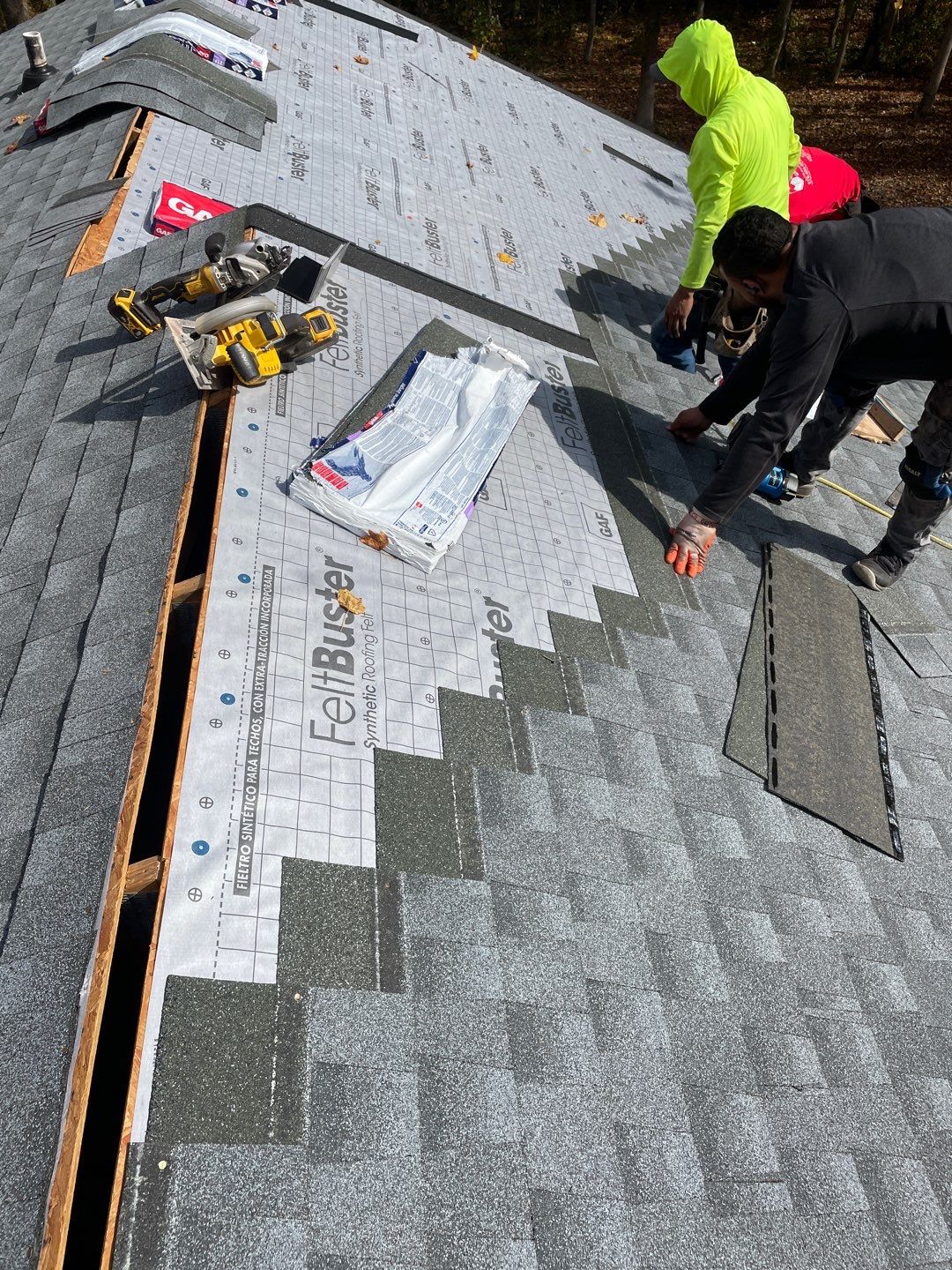Step-by-Step Overview to Finding the Right Roofing Companies in Gainesville
Step-by-Step Overview to Finding the Right Roofing Companies in Gainesville
Blog Article
Best Practices for Ensuring Proper Roofing Ventilation
Making sure appropriate roof covering ventilation is important for the longevity and effectiveness of a roof covering system. A well balanced intake and exhaust vent proportion, commonly 1:300, plays an essential role, with consumption vents preferably placed at the lower side of the roof for trendy air entry and exhaust vents at the height for cozy air leave. Regular examinations to determine clogs and keep clear air movement are paramount. Keeping insulation away from vents is crucial to protect against airflow constraint. Recognizing these foundational components establishes the stage for even more thorough insights right into setup and maintenance practices that can considerably enhance your roof's efficiency.
Understand Air Flow Fundamentals
Properly understanding air flow basics is necessary for making sure the durability and efficiency of roof. Efficient ventilation minimizes dampness accumulation and temperature level extremes in the attic, both of which can cause significant structural damage in time. A well-ventilated roofing system assists in stopping usual concerns such as mold development, wood rot, and ice dams, which can jeopardize the honesty of the roof covering materials and the underlying structures.
The key objective of ventilation is to facilitate the motion of air, permitting for a constant exchange between the indoor and outside settings. This balance is achieved through a mix of intake and exhaust vents that interact to maintain optimal air flow. Consumption vents, generally situated along the soffits or eaves, enable fresh air to go into the attic room, while exhaust vents, often situated at or near the roof covering ridge, allow hot, damp air to get away.
Key elements influencing the performance of roofing ventilation consist of correct placement, sufficient sizing, and making certain that both intake and exhaust vents are unblocked. Routine examination and upkeep are vital to recognize potential blockages, damages, or inadequacies in the ventilation system, consequently protecting the roofing's performance and toughness.
Kinds of Roofing System Vents
Roof vents play an essential duty in maintaining efficient attic room air flow and, by extension, the overall wellness of the roof covering system. Numerous types of roofing vents are offered, each with distinct benefits customized to particular roofing requirements.

Soffit vents are installed under the eaves and operate in tandem with roof vents to make certain a well balanced intake and exhaust system. By allowing cooler air to get in from below, soffit vents facilitate the expulsion of warm air with top vents. Gable vents, situated on the outside wall surfaces of the attic, deal one more effective option, especially in homes with saddleback roofs.
Assess Your Present Air Flow

Following, consider the age and condition of your roof materials and air flow components. Older systems may not abide by existing building regulations or might have deteriorated gradually, lowering their efficiency. Conduct a detailed examination to identify any kind of indications of damage, such as corrosion, damages, or spaces that can endanger the system's performance.
Furthermore, determine the attic room temperature and humidity degrees. High temperatures and humidity can suggest inadequate ventilation.
Installment Best Practices
Efficient installment of roofing air flow systems is paramount for guaranteeing ideal performance and durability. Appropriate setup starts with understanding the particular ventilation demands of the roof covering and the building it covers. This involves determining the right proportion of intake to tire vents, usually sticking to the 1:300 policy, which specifies one square foot of air flow for every 300 square feet of attic floor room.

Intake vents need to be mounted at the roof covering's lower side, often in the soffits, to permit great air to go into. Exhaust vents, on the other hand, need to be mounted near or at the roof covering's height to assist in the exit of warm, roofing companies in gainesville florida moist air.
Seal all air vent connections thoroughly to avoid air leakages and possible water infiltration. Usage top quality materials and follow supplier standards to make sure longevity and efficiency. In addition, incorporating ridge vents with baffles can dramatically enhance air flow effectiveness by preventing wind-driven rain and snow from entering the attic room.
Eventually, precise installment of roof air flow systems reduces prospective issues such as mold and mildew growth, ice dams, and structural damage, making certain the roof's stability and the building's overall health.
Regular Maintenance Tips
Uniformity in upkeep practices is essential to making sure the long-term performance of roof covering ventilation systems. Routine inspections are important, ideally done biannually-- in the springtime and autumn. During these inspections, make certain that vents are devoid of particles, nests, and other obstructions that might hinder air flow. Look for any kind of signs of wetness build-up or mold and mildew, as these can indicate inappropriate air flow or leakages (roofing companies gainesville florida).
Cleansing the vents is an additional important job. Utilize a soft brush or a vacuum to get rid of dirt and particles from intake and exhaust vents. Beware not to damage the vent screens or louvers during the process. Additionally, inspect the attic room for any indicators of water damages, which might compromise the stability of the roof.
Proper insulation is just as crucial. Ensure that attic insulation does not block the vents, as this can significantly restrict airflow. If any kind of insulation has moved or worked out, rearrange or change it to keep an efficient barrier.
Lastly, replace any kind of damaged or missing parts without delay. Damaged vents, cracked roof shingles, or tatty blinking can all add to poor ventilation and needs to be dealt with immediately. Routine maintenance makes certain that the roof ventilation system functions efficiently, therefore expanding the life expectancy of the roof itself.
Final Thought
Guaranteeing correct roof covering air flow is vital for maintaining the effectiveness and resilience of a roofing system. Adherence to the 1:300 intake and exhaust vent ratio, combined with the critical positioning of vents, is essential.
A well balanced consumption and exhaust air vent proportion, commonly 1:300, plays a crucial function, with consumption vents ideally positioned at the reduced edge of the roofing for awesome air access and exhaust vents at the peak for cozy air exit. Consumption vents, normally located along the eaves or soffits, allow fresh air to go into the attic room, while exhaust vents, frequently located at or near the roof ridge, make it possible for hot, humid air to leave.
Soffit vents are set up under the eaves and job in tandem with roofing vents to make sure a well balanced intake and exhaust system. By enabling cooler air to Find Out More go into from below, soffit vents assist in the expulsion of hot air through top vents. Adherence to the 1:300 consumption and exhaust air vent proportion, paired with Read More Here the strategic positioning of vents, is vital.
Report this page